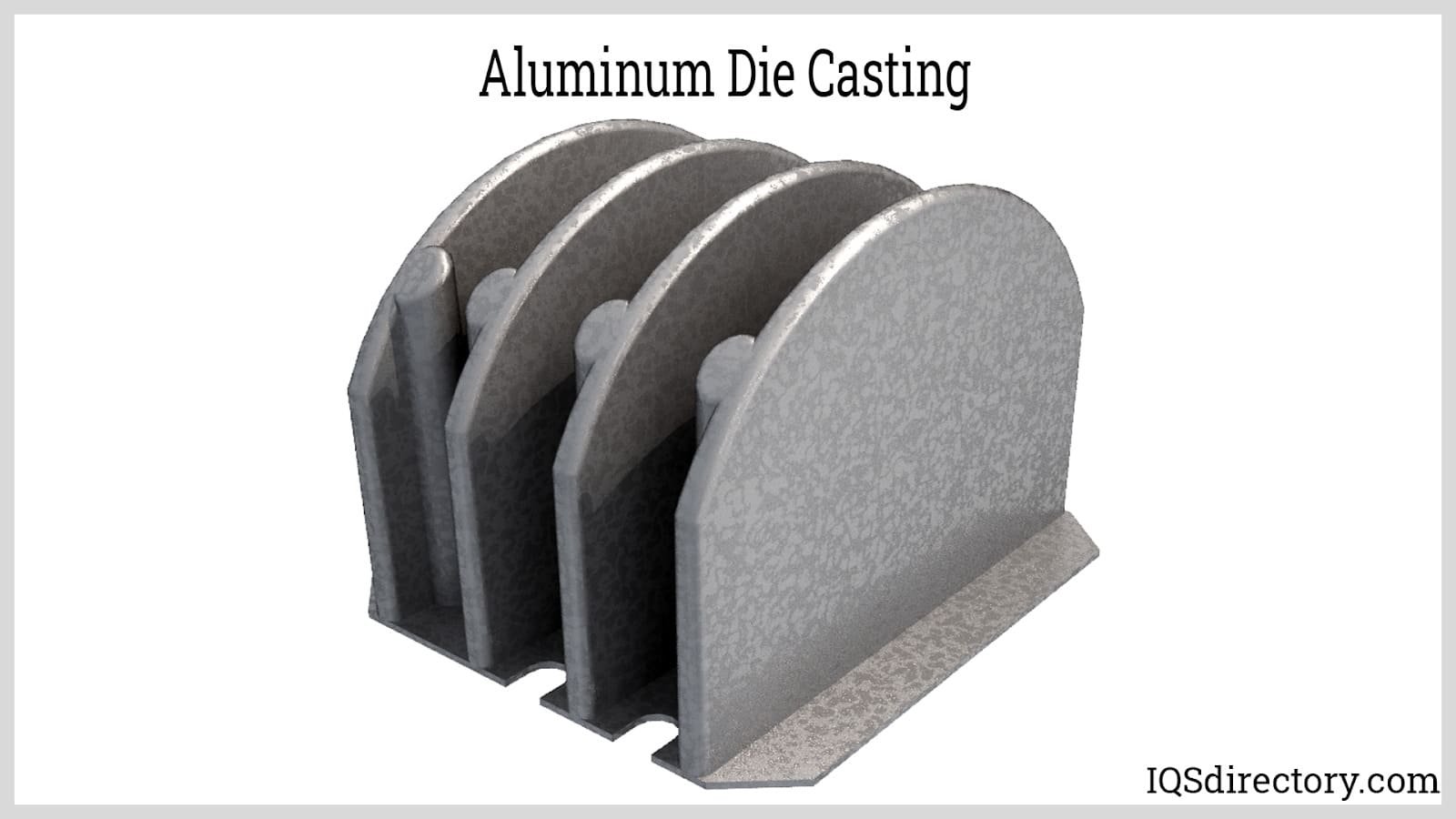Aluminum Foundry Wisconsin holds an essential place in casting projects
Exactly How Aluminum Foundry Contributes to Advancements in Aerospace Design
Aluminum factories are important to developments in aerospace engineering. They create lightweight, high-strength elements that are important for modern-day aircraft. Via sophisticated spreading strategies, these foundries produce complicated geometries that boost architectural integrity. Furthermore, the advancement of superior Aluminum alloys sustains the market's concentrate on fuel efficiency and sustainability. Nevertheless, obstacles remain in the manufacturing process. Comprehending these variables exposes the extensive effect of Aluminum on aviation's future.
The Relevance of Lightweight Products in Aerospace Design
As the aerospace sector continues to evolve, the significance of lightweight products ends up being progressively evident. The demand for efficiency and sustainability drives designers to focus on using products that minimize total weight without endangering architectural stability. Light-weight products, specifically Aluminum, play a vital role in enhancing fuel performance, boosting haul capacity, and enhancing the total efficiency of airplane.
The assimilation of these products allows for cutting-edge designs, making it possible for manufacturers to develop even more wind resistant forms that can withstand extreme problems. The reduction in weight not only reduces operational costs yet additionally adds to a decreased ecological impact, lining up with global efforts towards sustainability in aeronautics.
Advanced Spreading Techniques in Aluminum Foundries
Advanced casting methods in Aluminum factories play a critical role in aerospace design by enabling the production of specific and lightweight parts. Advancements in mold and mildew design and precision casting procedures are crucial in attaining optimal efficiency and structural integrity. Additionally, the development of lightweight alloys boosts the overall effectiveness and efficiency of aerospace applications.
Cutting-edge Mold Design
Cutting-edge mold and mildew design plays a vital role in the effectiveness and effectiveness of Aluminum factories, particularly within the aerospace industry. By leveraging advanced materials and strategies, modern mold and mildews can be engineered to hold up against heats and stress, making certain peak efficiency throughout the spreading process. These designs frequently incorporate complicated geometries that enable for the production of lightweight yet structurally sound components, important for aerospace applications. In addition, using computer-aided style (CAD) software program assists in accurate modeling, enabling factories to improve and simulate mold layouts before physical production begins. This not just enhances the high quality of actors parts yet additionally decreases waste and preparation, bring about significant cost savings. Overall, innovative mold and mildew layout is a foundation of progression in Aluminum Foundry modern technology for aerospace design.
Accuracy Casting Processes
The performance of ingenious mold layouts perfectly incorporates with accuracy spreading processes, which are important for producing premium Aluminum elements in aerospace design. These procedures, consisting of sand spreading, die spreading, and investment casting, assure the development of intricate geometries with limited tolerances. Advanced strategies like vacuum cleaner spreading and stress pass away casting enhance the honesty and surface area finish of the final items. Accuracy spreading lessens product waste while making the most of the mechanical buildings of Aluminum, important for aerospace applications. In addition, utilizing real-time monitoring and progressed simulation tools during the casting process permits instant changes, leading to enhanced quality assurance. Collectively, these accuracy casting processes placement Aluminum factories at the forefront of aerospace innovation, sustaining the industry's need for integrity and performance.
Light-weight Alloy Growth
As aerospace engineers look for to improve fuel performance and performance, light-weight alloy development comes to be an important emphasis in Aluminum foundries. These factories employ sophisticated spreading techniques to produce alloys that offer remarkable strength-to-weight proportions. Developments in alloy composition, consisting of the consolidation of components like lithium and magnesium, allow the manufacturing of materials that endure severe conditions while decreasing overall aircraft weight. Techniques such as die casting and financial investment casting promote the precision production of complicated shapes, which are crucial for aerospace applications. Additionally, ongoing research intends to maximize these alloys for improved mechanical homes and increased longevity. By prioritizing light-weight alloy advancement, Aluminum shops greatly contribute to the evolution of aerospace engineering, leading the means for much more lasting and efficient airplane designs.

Enhancing Structural Integrity Through Aluminum Elements
Aluminum parts provide significant advantages in boosting structural stability within aerospace design. Their lightweight nature adds to overall effectiveness while keeping stamina, which is important for airplane efficiency. In addition, the stress resistance residential or commercial properties of Aluminum help ensure the toughness and integrity of aerospace structures under different operational problems.
Light-weight Material Perks
While conventional materials often jeopardize weight for strength, using Aluminum parts in aerospace engineering supplies substantial advantages in structural stability. Aluminum's lightweight nature adds to total layout performance, permitting for more streamlined aircraft that eat much less gas, consequently improving sustainability. The material's outstanding strength-to-weight ratio warranties that elements preserve toughness without including unneeded mass. This top quality cultivates boosted performance and dexterity in trip, along with enhanced payload abilities. Additionally, Aluminum's resistance to deterioration lengthens the lifespan of aerospace frameworks, lowering maintenance prices and enhancing safety and security. As manufacturers significantly adopt Aluminum alloys, the aerospace industry experiences a transformative change in the direction of more reliable and efficient engineering services that prioritize both performance and environmental responsibility.
Anxiety Resistance Properties
Although numerous materials possess special why not look here properties, Aluminum's phenomenal anxiety resistance stands apart as a vital consider improving the architectural stability of aerospace components. This resistance plays an important function in ensuring that aircraft can withstand various operational stress and anxieties, including exhaustion, effect, and ecological conditions. Aluminum alloys, specifically crafted for aerospace applications, exhibit high tensile strength while preserving light-weight characteristics, making it possible for designers to develop a lot more efficient frameworks - Aluminum Foundry. Furthermore, the capacity of Aluminum to sustain cyclic loading without significant contortion adds to the longevity and dependability of aerospace components. As improvements proceed in Aluminum Foundry methods, the development of stress-resistant Aluminum elements guarantees additional renovations in performance, safety and security, and efficiency throughout the aerospace sector, solidifying Aluminum's role as a preferred material in modern-day engineering
Fuel Efficiency Improvements Driven by Aluminum Innovations
As the aerospace market looks for to improve fuel efficiency, innovative uses Aluminum have arised as a vital service. Aluminum's lightweight nature especially reduces airplane weight, permitting lower fuel consumption during flight. This decrease in weight is crucial, as even small declines can result in considerable improvements in general gas economy.
Advanced Aluminum alloys, developed for improved strength and sturdiness, allow producers to develop parts that preserve structural integrity while reducing mass - Aluminum Foundry. In addition, the assimilation of Aluminum in airframes and engine parts helps with improved aerodynamics, adding to reduced drag and boosted performance
The fostering of Aluminum in aerospace not only fulfills the need for fuel-efficient design yet likewise straightens with regulative pressures for lower discharges. As these technologies proceed to develop, they play a significant function in setting new standards for fuel performance, making sure that the aerospace market can fulfill expanding economic and ecological obstacles.

The Function of Aluminum in Sustainable Air Travel Practices
The enhancing emphasis on lasting aviation practices has actually placed Aluminum as a vital product in the pursuit for greener aircraft layout. Understood for its light-weight buildings, Aluminum significantly reduces airplane weight, leading to reduced gas usage and emissions. Its recyclability additionally improves its sustainability profile, as Aluminum can be reused forever without loss of top quality. This particular supports a round economy within the aviation industry, decreasing waste and resource exhaustion.
Innovations in Aluminum alloys have actually improved their stamina and deterioration resistance, enabling for longer service life and decreased upkeep demands. These advancements assist in the advancement of more efficient aircraft structures, adding to total sustainability efforts. In addition, Aluminum's thermal conductivity plays an important function in energy-efficient designs, boosting systems such as warmth exchangers. Jointly, these qualities underscore Aluminum's essential role in progressing lasting aeronautics, lining up with global initiatives intended at lowering the ecological effect of air traveling.
Obstacles Encountered by Aluminum Foundries in Aerospace Production
While Aluminum factories play a vital role in aerospace production, they deal with substantial difficulties that can impact production performance and top quality. One major obstacle is the rigid quality assurance criteria required in the aerospace industry. Any kind of problem can compromise security and efficiency, necessitating strenuous examination processes that extend production timelines. Additionally, shops frequently emulate rising and fall resources costs, which can impact prices and productivity. The complexity of Aluminum alloys used in aerospace applications more makes complex the manufacturing procedure, as accurate formulas are crucial for attaining desired mechanical residential or commercial properties. Additionally, knowledgeable labor scarcities hinder the capability to keep high-grade manufacturing degrees. Finally, ecological policies impose limitations on emissions and waste monitoring, requiring shops to spend in lasting techniques, which can be cost-prohibitive. These factors jointly produce a landscape where Aluminum factories should constantly adapt to fulfill the advancing demands of aerospace production while guaranteeing security and compliance.
Future Patterns in Aluminum Applications for Aerospace Engineering
With advancements in modern technology and increasing needs for effectiveness, the future of Aluminum applications in aerospace design is positioned for considerable makeover. The integration of innovative Aluminum alloys and composites is anticipated to improve strength-to-weight ratios, leading to more fuel-efficient aircraft designs. Furthermore, innovations in additive manufacturing strategies will certainly enable the production of complex Aluminum frameworks that were formerly impossible, enhancing efficiency and minimizing waste.

Lasting techniques will certainly play an important Extra resources function, with a growing focus on recycling Aluminum to minimize environmental effect. The aerospace field is most likely to embrace smarter making procedures, such as automation and man-made intelligence, making sure greater quality and accuracy in Aluminum elements. Additionally, cooperations in between Aluminum foundries and aerospace companies will cultivate r & d, leading the way for new applications that fulfill the strict needs of modern aerospace design - Aluminum Foundry. Overall, the future looks promising for Aluminum's duty in forming the skies
Regularly Asked Concerns
What Are the Environmental Impacts of Aluminum Manufacturing in Aerospace?
The environmental effects of Aluminum production in aerospace consist of considerable power intake, see this greenhouse gas exhausts, and environment disturbance. In addition, mining procedures can cause dirt degradation and water contamination, raising concerns concerning sustainability and ecological equilibrium.
Exactly How Does Aluminum Compare to Other Materials in Aerospace Applications?
Aluminum uses a distinct mix of lightweight buildings, corrosion resistance, and cost-effectiveness compared to other products. Its high strength-to-weight proportion makes it particularly beneficial for aerospace applications, enhancing gas performance and total performance in aircraft style.
What Credentials Do Aluminum Foundry Workers Requirement for Aerospace Projects?
Aluminum Foundry employees call for specific training in metallurgy and spreading techniques, together with expertise of aerospace industry standards. Qualifications in quality assurance and safety and security protocols are also vital to guarantee compliance with stringent aerospace job requirements.
Exist Any Kind Of Security Problems With Using Aluminum in Aerospace Engineering?
Safety problems regarding Aluminum in aerospace design consist of sensitivity to rust, fatigue, and stress fractures. Proper therapy and alloy option are vital to minimize these risks, guaranteeing structural honesty and general security in aerospace applications.
Just How Does Aluminum Recycling Benefit the Aerospace Industry?
Aluminum recycling considerably benefits the aerospace sector by reducing product expenses, minimizing ecological impact, and saving power. This sustainable method improves the market's effectiveness while advertising the usage of lightweight, high-performance elements in aircraft production.
Advanced spreading methods in Aluminum shops play an essential role in aerospace engineering by enabling the production of lightweight and specific components. Ingenious mold and mildew design plays a vital duty in the performance and efficiency of Aluminum factories, especially within the aerospace field. As aerospace designers seek to enhance gas efficiency and efficiency, lightweight alloy growth ends up being a vital emphasis in Aluminum factories. Aluminum alloys, particularly engineered for aerospace applications, display high tensile strength while keeping lightweight characteristics, enabling engineers to develop more effective structures. Collaborations in between Aluminum foundries and aerospace firms will certainly promote research study and advancement, paving the way for new applications that meet the rigorous requirements of modern-day aerospace design.